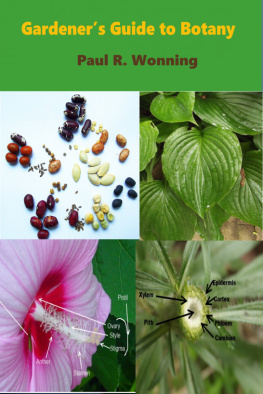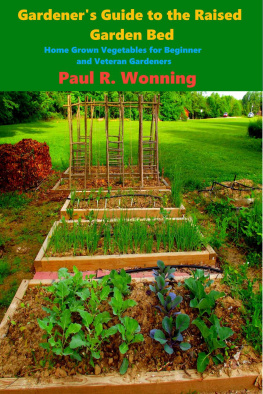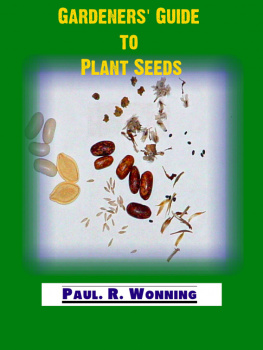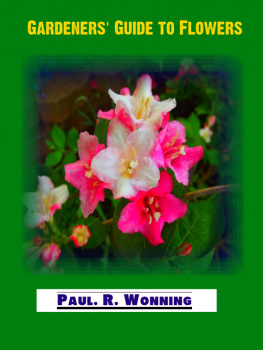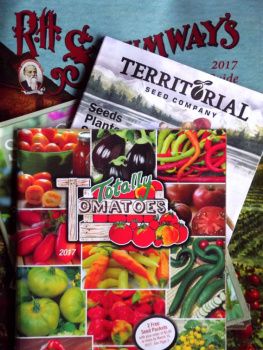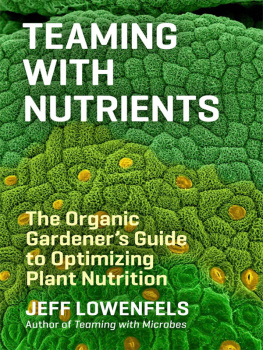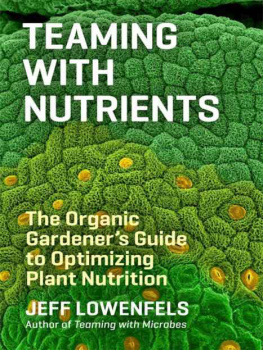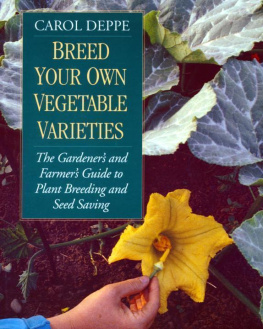Gardeners Guide toBotany
A Basic Botanical Guide forGardeners
Gardeners' Guide to BotanySeries Book V
Paul R. Wonning
Description
Gardener's Guide toBotany is a basic manual to botanicalinformation. Written for gardeners by a gardener this manualteaches the gardener about plant seeds, flowers, roots andleaves.
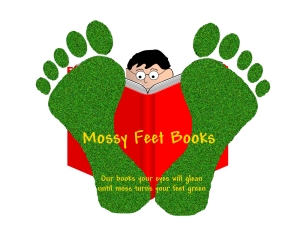
Gardeners Guide toBotany
Published Paul R.Wonning
Copyright 2016 by Paul R.Wonning
Ebook Edition
This ebook is licensed foryour personal enjoyment only. This ebook may not be re-sold orgiven way to other people. If you would like to share this bookwith another person, please purchase an additional copy for eachrecipient. If you're reading this book and did not purchase it, orit was not purchased for your use only, then please return toSmashwords.com and purchase your own copy. Thank you for respectingthe hard work of this author.
All rightsreserved.
If you would like emailnotification of when new installments of
this series are available,email the author for inclusion in the subscription list.
Paul R. Wonning
mossyfeetbooks@gmail.com
Facebook Mossy Feet Books
Mossy FeetBooks
IndianaPlaces

Table of Contents
Gardeners Guide toCompost
Garden Soil Types - A QuickSoil Primer
Gardeners Guide to PlantSeeds
Paul R.Wonning
Introduction

A seed is kind of anamazing thing. A seed packs everything it needs to grow a plant.The type of plant, how big it will grow, what kind of leaves itwill have, and its flower color. Literally the entire blueprint ofthe plant is contained within that tiny package we call aseed.
All flowering plants growfrom seeds, and that includes just about everything found in theflower and vegetable garden, excluding ferns, fungi, and mosses.The tiny seed produces everything from the diminutive moss roses tothe huge oak tree.
Seed size has virtually noimpact upon the size of plant that grows from it. Some of thelargest plants may grow from seed the size of dust, and very largeseeds sometimes produce diminutive plants.
Seeds in the wild dependupon a number of different mechanisms to allow them to reach theproper locations and conditions for them to germinate. Some havefluffy wings to allow the wind to disperse them over a widearea.
Others have Velcro-likespurs to stick to animals fur. Others clothe themselves in fleshyfruit, which in turn is eaten by birds and animals and thusdispersed. Many of these need the harsh enzymes produced by thedigestive systems of these animals to dissolve the seed coatsufficiently to allow germination.
Seeds are of immensecommercial value to us. Corn supplies both human food and feed forthe livestock we depend upon for meat and protein. Corn alsoprovides ethanol for fuel for our vehicles. Soybeans supplyplastics, cooking oils and other important products. Other graincrops find use as bread, beer, and other items we use in oureveryday life.
The amazing seed packseverything needed to grow a plant into a compact package. Allflowering plants produce seed that not only serves as a method ofreproduction for the plant but also a major food source for humans,animals and insects. Seeds are an indispensable part of ourworld.
Botanical terms used in thisarticle:
Angiosperms
Angiosperms are the groupof plants we know of flowering plants, as opposed to thegymnosperms, or "naked seed" plants and spore producing plants likeferns and fungi. The word "angiosperm" comes from the Greek words"angeion", which means "vessel", and "sperma," which means "seed."The term refers to the vessel (fruit) contained seeds of this vast,diverse groups of plants. The angiosperms are the most numerous ofall plant types and occupy virtually every climate zone in theworld. There are about 250,000 species of angiosperms on earth.Angiosperms appeared on Earth approximately 150 million yearsago.
Anther
The anther is the pollenbearing part of the stamen of a flower. The anther is located atthe apex of the stamen. The anther is the male reproductive part ofthe flower and produces the pollen.
Cell
The cell is the basicbuilding block of a living organism, plant or animal. The term"cell" originated from the first man, Robert Hooke, to look at oneusing a microscope of his own construction in 1665. The wordoriginates from the Latin word "cella," which means "small room." Aplant cell is a complex unit that contains the necessary componentsfor a plant to convert sunlight into energy, allowing the plant togrow and reproduce.
Dicots
The dicots are one of thetwo major divisions of the angiosperms, the other being monocots.The term is derived from two words, "di," which means two, and"cots" which is an abbreviation of the word cotyledons. Thecotyledon is the first portion of the plant to emerge when the seedgerminates. The cotyledon's purpose is to supply food to thedeveloping plant until the true leaves form and can manufacturefood. Dicots have two of these seed leaves and monocots likegrasses have only one.
Dormancy
Dormancy is the state ofreduced cellular activity the seed enters after forming. Thedormancy state allows a seed to survive long periods during adverseconditions.
Egg
The egg is the female cellneeded, in addition to sperm, for fertilization to occur. It istermed a "gamete" which originates from the Greek word, gamein,which means to marry. It refers to the sexual process in which twosex cells, the egg and sperm need to unite to form a new cell, thezygote.
Embryo
The embryo is the immature,dormant plant contained in a seed. The embryo has all of thecharacteristics of plant that it will become, in miniature. It willhave a root, stem and seed leaves.
Endosperm
The endosperm is the foodstorage tissue in seeds that formed by the secondary fertilizationwhen the egg and sperm unite.
Fertilization
Fertilization is theprocess of sexual reproduction in which the sperm cell unites withthe egg cell, forming a zygote that is an entirely newentity.
Nuclei
The nucleus is locatedwithin the cell and it controls all activities within the cell. Thenucleus contains the genetic material, DNA. During cellreproduction the nucleus splits in half, imparting half of the DNAto each new cell created by the process.
Ovary
The ovary is the bottomportion of the pistil of the flower in which fertilization occurs.The ovary contains the egg cells and it becomes the seed coat afterfertilization occurs.
Ovule
The ovule is an immatureseed contained in the ovary. There may be one or more ovules in anovary. The egg cells are located in the ovules, awaiting sperm fromthe pollen to fertilize them. The ovule will then develop into aseed.
Pollen
The anther of the flowerproduces pollen. Pollen is the male portion of the sexualreproductive process in plants as it contains the sperm cells.Pollen is dust like in nature and each pollen grain contains twocells. One of these cells will divide, forming the sperm cells.Pollen is very durable and it can survive for thousands of yearsunder proper conditions. The grains have a distinctive shape andthe pollen may identify different species of plants.
Seed
The seed contains all thegenetic material needed to produce a new plant. It is formedthrough sexual reproduction by the plant.
Next page
